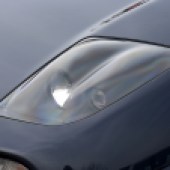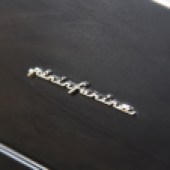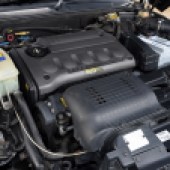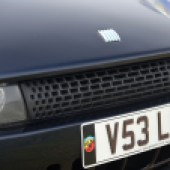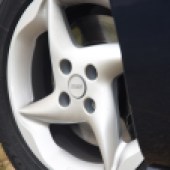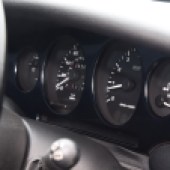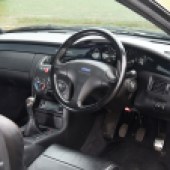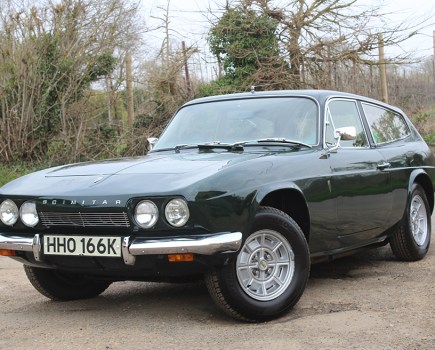One of the most dramatic coupes of its generation, the Fiat Coupe is also a thrill to drive. Here’s how to buy one
Images: Paul Walton
Among the automotive trends of the 1990s was the widespread return of the coupe, with major manufacturers keen to join what was fast becoming a burgeoning sector of the market once again. While the hot hatch was the biggest news of the 1980s, there was increased demand during the following decade for low-slung alternatives offering a touch more style.
Few of the newcomers of the 1990s, however, boasted such a distinctive look as the logically named Fiat Coupe; with its wedge-like shape, dramatic wheelarch ‘slashes’, bubble-top headlamps and race-type filler cap, the new-for-1994 Italian offering (on sale in the UK from 1995) was like nothing else in its class, all thanks to the vivid imagination of one Chris Bangle. Inside too, the Fiat looked dramatically different from the competition thanks to its colour-coded painted metal dashboard – a major departure from the norm back then.
Available in both 16-valve normally-aspirated and turbocharged guises, the Fiat Coupe had the performance to go with its looks. But it was with the debut of the 20-valve five-cylinder models in 1996 that this sporting Fiat achieved true greatness. The new 20v Turbo pushed out 216bhp and hit 60mph from rest in just over six seconds, with its front-drive torque steer kept in check via a limited slip diff and beefed-up suspension.
The 20v Turbo’s top speed was 149mph, pushed to 155mph in 1998 when a six-speed manual gearbox became standard equipment. But production of the Coupe ceased in December 2000 after a total run of 72,762 cars, and these days any decent survivor is sought after among modern classic fans.
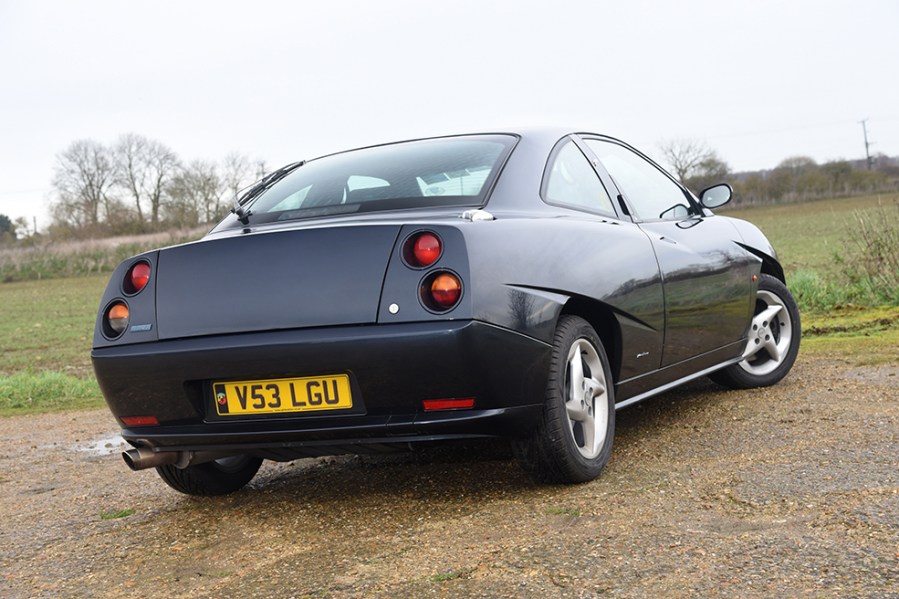
Bodywork
If you’re one of those who still thinks a Fiat is automatically more rust-prone than its contemporaries, it’s time to update your references. In fact, Fiat did more than most manufacturers in the 1990s when it came to using galvanised steel, hence the Coupe’s relatively decent survival rate. Even so, the earliest UK-spec cars are now the best part of 30 years old, which means you still need to be vigilant.
One of the most vulnerable areas is the boot floor, particularly where it meets the inner rear arches and into the corners – so make sure you lift the carpet and have a poke around. Water ingress around the lower side Pininfarina badges can also lead to problems with the bottom of each rear quarter panel. The Fiat Coupe Forum reports that the front jacking points can rust on neglected cars, as can the front slam panel (to which the radiator is bolted). Also, make sure that you check the front and rear bumper supports for rot, although reproductions are available and fairly easy to change.
The black stone-guard used on the sills can chip and wear away, which can lead to paintwork issues and surface rust; you should also check for signs of bubbling paintwork here, a sure sign of rot that’s working its way through from the inside. You also need to look for evidence of accident damage, often shown by a misaligned bonnet and poor shut lines; and if there are signs of any fresh paintwork, you need to know why. The edges of the bonnet can be prone to rust, as can the sunroof frame.

Engine and transmission
On any Coupe Turbo, the state of the turbocharger needs confirming. Run the car after your test drive, leaving it ticking over for up to 10 minutes to check whether there’s bleed from the turbo oil seals (shown via excessive blue smoke). When driving the car, the turbo should noticeably kick in at 2500–3000rpm.
Exhaust manifolds are prone to cracking, so listen out for a ‘ticking’ noise on start-up that will probably disappear as the temperature rises. A minor noise might indicate early cracking, with anything louder suggesting the manifold needs replacing (not a cheap job). Another tell-tale sign of manifold cracks is discolouration of the heat shield, so check thoroughly.
Ideally, you need to be buying a car with a full service history that shows maintenance via a reputable specialist, with the Fiat Coupe Forum suggesting this is more important than the car’s mileage. You also need proof of when the cambelt was last changed, although the forum debunks the myth that this is an engine-out job; any Fiat specialist should know to slack off the engine mounts, jack the engine to one side and swap the cambelt that way, saving both time and money. You’re probably looking at around the £600–700 mark for this (depending on labour rates where you are), including a new water pump, tensioner and belts.
The gearbox (six-speed from 1998) should bring few problems unless a car has been seriously abused; if it feels unusually notchy, there may be damage. Check for signs of a slipping clutch, as this can be an expensive job – particularly if you’re buying a 20v Turbo. Make sure there’s no ‘crunching’ (a sign of synchromesh wear), particularly on the lower two gears.
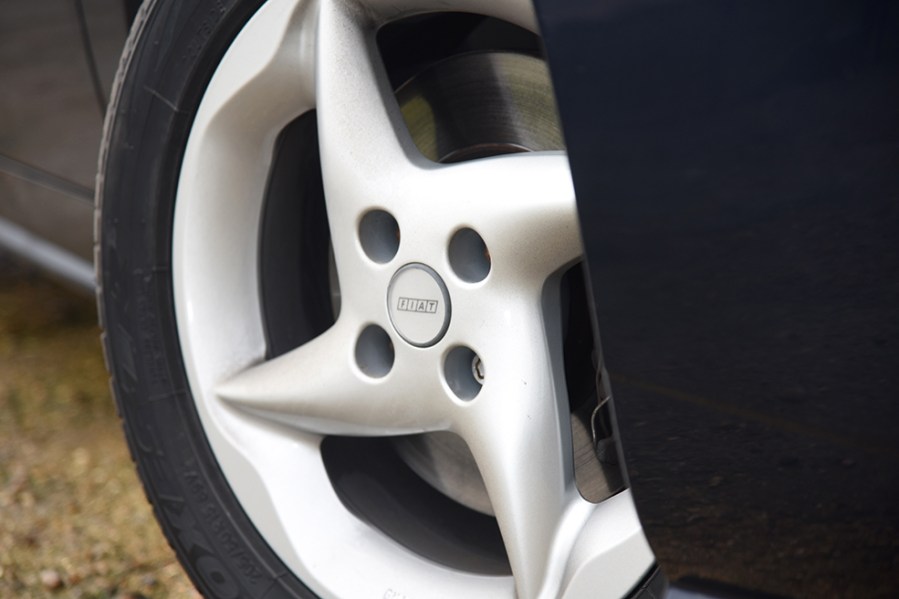
Suspension, steering and brakes
The Fiat Coupe uses MacPherson struts up front, with both ends of the car featuring telescopic dampers, coil springs and anti-roll bars. Many owners report that because of its weight distribution (65/35 front/rear), the Coupe’s front wishbones and track rod ends can wear within just 40,000 miles; replacements are available, but it’s worth checking the cost with a Fiat specialist before you start haggling over the car you’re thinking of buying. Anti-roll bar drop links are also prone to wear, so check that the handling doesn’t feel unduly ‘sloppy’ and listen out for any suspension clunks.
Any Fiat Coupe offers sharp, precise steering that helps to make it a rewarding driver’s car, although the 20v Turbo’s use of an Alfa GTV rack means extra responsiveness. If the steering feels as though it’s wandering, this could be caused by worn wishbones. As with any steering system, check for leaks and listen out for excessive noise when turning lock to lock.
The four-pot Brembo braking system is fairly straightforward, although the discs are prone to warping on a Coupe that’s led a hard life. When braking from a motorway speed, check for signs of brake shudder felt through the steering wheel – if it’s there, you need to budget for new discs, which will also mean new pads.

Interior, trim and electrics
The interior of the Fiat Coupe is one of its stand-out features, so check the condition of the painted surfaces for signs of scratches and general wear and tear, as well as the door cards. The front seats are the most damage-prone areas, particularly the base and side bolsters. Both cloth and leather-trimmed seats are vulnerable, and neither will be easy or cheap to repair if the damage is fairly severe; minor scuffing on a leather interior, however, should be fixable via one of the leather renovation kits currently available.
Make sure that the air conditioning is fully functional, and that all of the electrics – including the electric front windows, electrically adjustable/heated door mirrors and central locking – are working as they should. Be suspicious of any Coupe with a plethora of non-working electrics, as tracing and rectifying such faults can be time-consuming and also suggests a car that’s been neglected.
Fiat Coupe: our verdict
Compared with other sporting fastback of the 1990s like the Rover 200 Coupe, Ford Probe, Peugeot 406 Coupe and Vauxhall Calibra, the Fiat Coupe has a unique, purposeful style that still endears it to many enthusiasts. And as soon as you step inside, having already been wowed by its head-turning look, you know this is a car for the individualist.
Happily, it’s also a car for the thrill seeker, with even the four-cylinder versions (sharing the same engine as the Lancia Delta Integrale) providing plenty of performance. Opt for a late-model 20v Turbo and you’re in for some proper excitement, with 216bhp to play with. Hitting 60mph from rest in almost exactly six seconds is impressive for what is still a relatively affordable modern classic; throw into the mix great handling and you’ve got a compelling argument for going Italian. Just make sure you spend your money on an impeccably maintained example rather than the one that seems a bargain.
There was a time when decent examples of the Fiat Coupe could be picked up very cheaply, much to the delight of modern-classic enthusiasts. But the last few years have seen substantial jumps in values, with the worst cars having long since disappeared and the best examples becoming ever more sought after.
It’s still possible to buy a Coupe in need of work for £1000 or less, with several examples having sold at auction for that kind of figure over the last 12 months. For anything that’s up and running and with a lengthy MoT, however, a budget £2500–3500 will be needed, and even then you can expect trouble and expense ahead. Better instead to spend £5000–6000 on a good example with a history of specialist maintenance, or £7000–9000 on one that’s also cosmetically very impressive. For the very best, lowest-mileage cars, a budget of up to £15,000 might be needed, at which level you can expect a show-worthy example with perfect paperwork.
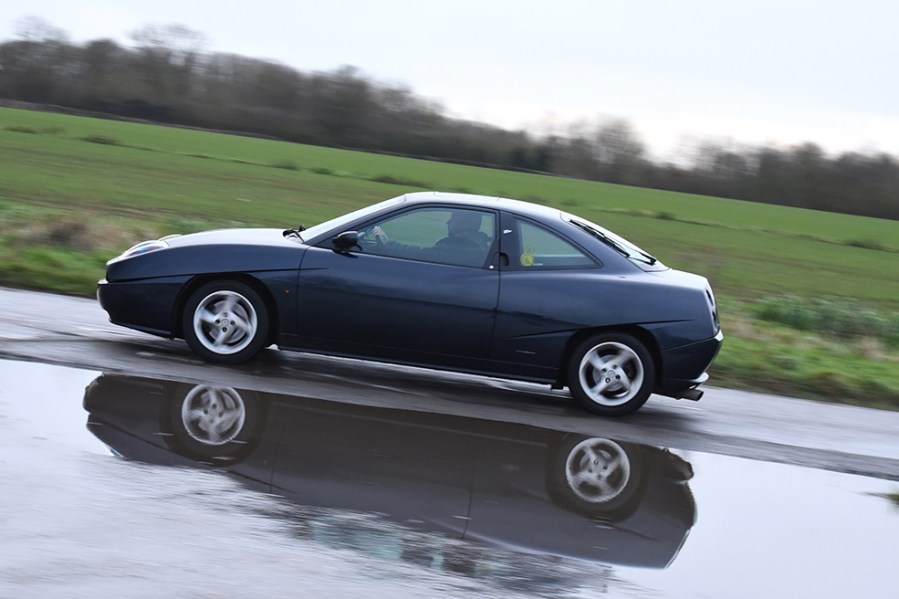
Fiat Coupe timeline
1994
Fiat Coupe officially launched in normally-aspirated and turbocharged guises
1995
Production of RHD cars gets under way, ready for a UK launch
1996
Five-cylinder 20v models replace the old four-cylinder engines
1998
Limited Edition (LE) arrives with body kit, plus titanium grey trim and wheels
2000
Production ceases in December after a run of 72,762 cars








